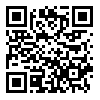Volume 10, Issue 4 (3-2024)
jhbmi 2024, 10(4): 326-336 |
Back to browse issues page
Download citation:
BibTeX | RIS | EndNote | Medlars | ProCite | Reference Manager | RefWorks
Send citation to:



BibTeX | RIS | EndNote | Medlars | ProCite | Reference Manager | RefWorks
Send citation to:
Taghavizadeh M, Nooshyar M, Akbarimajd A, Shahalinezhad S. Automatic and Accurate Diagnosis of Alzheimer's Disease from MRI Images Improved by Deep Convolutional Neural Network. jhbmi 2024; 10 (4) :326-336
URL: http://jhbmi.ir/article-1-812-en.html
URL: http://jhbmi.ir/article-1-812-en.html
M.S.c in Biomedical Engineering, Faculty of Electrical and Computer Engineering, Urmia Graduate Institute of Electrical Engineering, Urmia, Iran
Abstract: (253 Views)
Introduction: Identifying and diagnosing Alzheimer's disease in brain tissue is one of the serious challenges in diagnosis in the field of medical image processing. Currently, MRI is the most common way to diagnose Alzheimer's disease, and failure to correctly identify the tissue involved in it can lead to incorrect diagnosis as healthy brain tissue. Deep learning algorithm as a process of detecting features related to damaged tissue and extracting useful information. In this research, we decided to use the convolutional neural network in the processing of medical images so that we can perform the diagnosis with better accuracy than the previous works.
Methods: Using a convolutional neural network, the features of MRI images have been extracted. Alzheimer's images have been analyzed using Matlab2023a software and the intended outputs have been obtained.
Results: Brain Alzheimer's images have been analyzed after pre-processing and entering the deep neural network, and in the output of the proposed algorithm, the identification accuracy and identification speed of the algorithm with the improvement of cloud parameters was higher compared to other common methods, which was 96% accuracy. presented in identification.
Conclusion: The purpose of using deep learning is to make image data with large dimensions and a large number into a conceptual form for machines. It is expected that in the future feature extraction will be done more accurately and more details will be available to machine vision systems to recognize objects in the image.
Methods: Using a convolutional neural network, the features of MRI images have been extracted. Alzheimer's images have been analyzed using Matlab2023a software and the intended outputs have been obtained.
Results: Brain Alzheimer's images have been analyzed after pre-processing and entering the deep neural network, and in the output of the proposed algorithm, the identification accuracy and identification speed of the algorithm with the improvement of cloud parameters was higher compared to other common methods, which was 96% accuracy. presented in identification.
Conclusion: The purpose of using deep learning is to make image data with large dimensions and a large number into a conceptual form for machines. It is expected that in the future feature extraction will be done more accurately and more details will be available to machine vision systems to recognize objects in the image.
Type of Study: Original Article |
Subject:
Artificial Intelligence in Healthcare
Received: 2023/09/10 | Accepted: 2023/12/16
Received: 2023/09/10 | Accepted: 2023/12/16
Audio File [M4A 1084 KB] (3 Download)
Send email to the article author
| Rights and permissions | |
 |
This work is licensed under a Creative Commons Attribution-NonCommercial 4.0 International License. |





